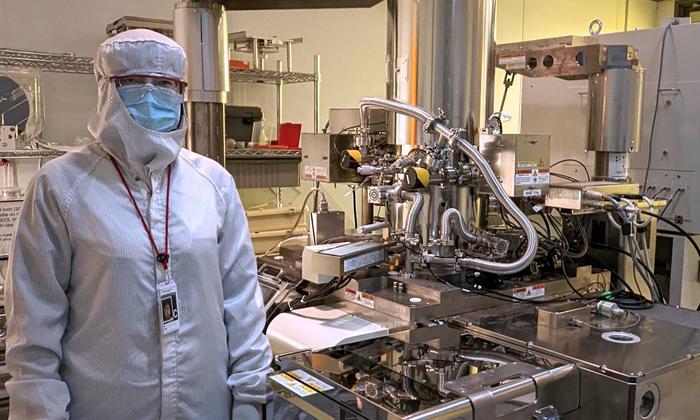A new tool for generating microwave signals could help propel advances in wireless communication, imaging, atomic clocks, and more.

Credit: University of Rochester
A new tool for generating microwave signals could help propel advances in wireless communication, imaging, atomic clocks, and more.
Frequency combs are photonic devices that produce many equally spaced laser lines, each locked to a specific frequency to produce a comb-like structure. They can be used to generate high-frequency, stable microwave signals and scientists have been attempting to miniaturize the approach so they can be used on microchips.
Scientists have been limited in their abilities to tune these microcombs at a rate to make them effective. But a team of researchers led by University of Rochester’s Qiang Lin, professor of electrical and computer engineering and optics, outlined a new high-speed tunable microcomb in Nature Communications.
“One of the hottest areas of research in nonlinear integrated photonics is trying to produce this kind of a frequency comb on a chip-scale device,” says Lin. “We are excited to have developed the first microcomb device to produce a highly tunable microwave source.”
The device is a lithium niobate resonator that allows users to manipulate the bandwidth and frequency modulation rates several orders-of-magnitude faster than existing microcombs.
“The device provides a new approach to electro-optic processing of coherent microwaves and opens up a great avenue towards high-speed control of soliton comb lines that is crucial for many applications including frequency metrology, frequency synthesis, RADAR/LiDAR, sensing, and communication,” says Yang He ’20 (PhD), who was an electrical and computer engineering postdoctoral scholar in Lin’s lab and is the first author on the paper.
Other coauthors from Lin’s group include Raymond Lopez-Rios, Usman A. Javid, Jingwei Ling, Mingxiao Li, and Shixin Xue.
The project was a collaboration between faculty and students at Rochester’s Department of Electrical and Computer Engineering and Institute of Optics as well as the California Institute of Technology. The work was supported in part by the Defense Threat Reduction Agency, the Defense Advanced Research Projects Agency, and the National Science Foundation.
Journal
Nature Communications
DOI
10.1038/s41467-023-39229-3
Article Title
High-speed tunable microwave-rate soliton microcomb
Article Publication Date
12-Jun-2023




